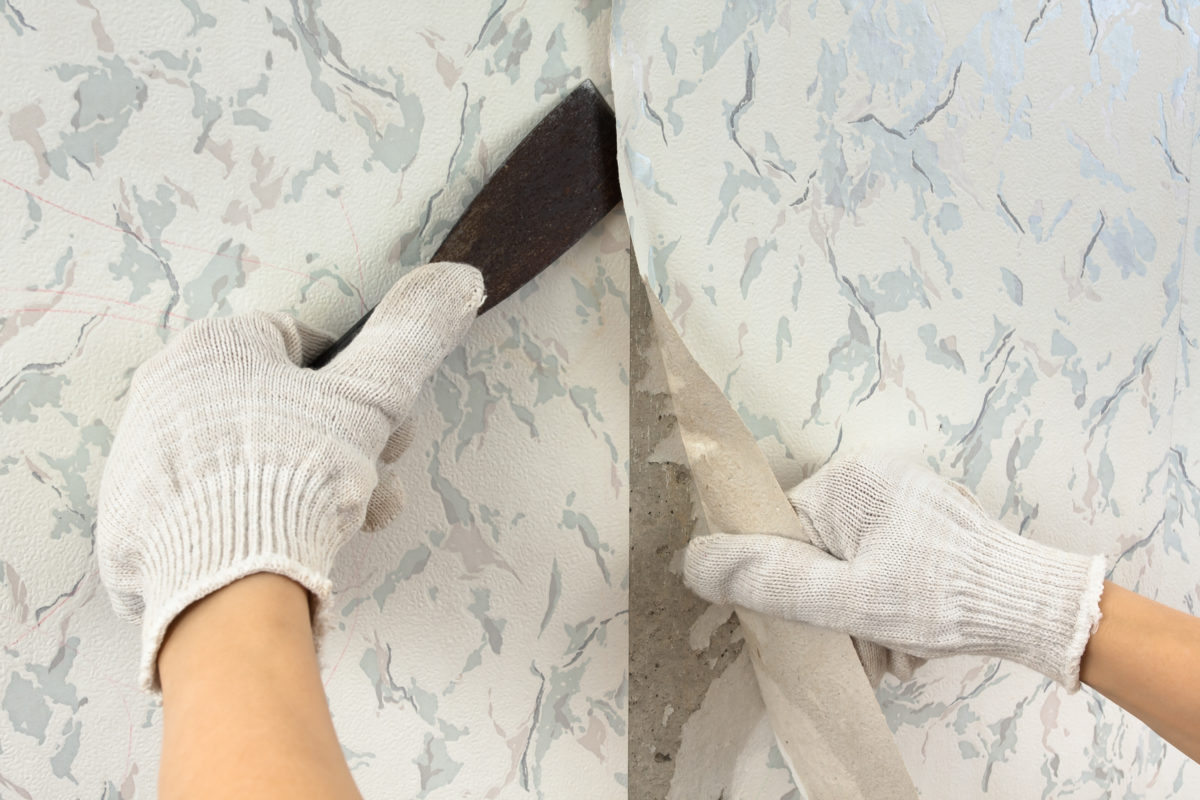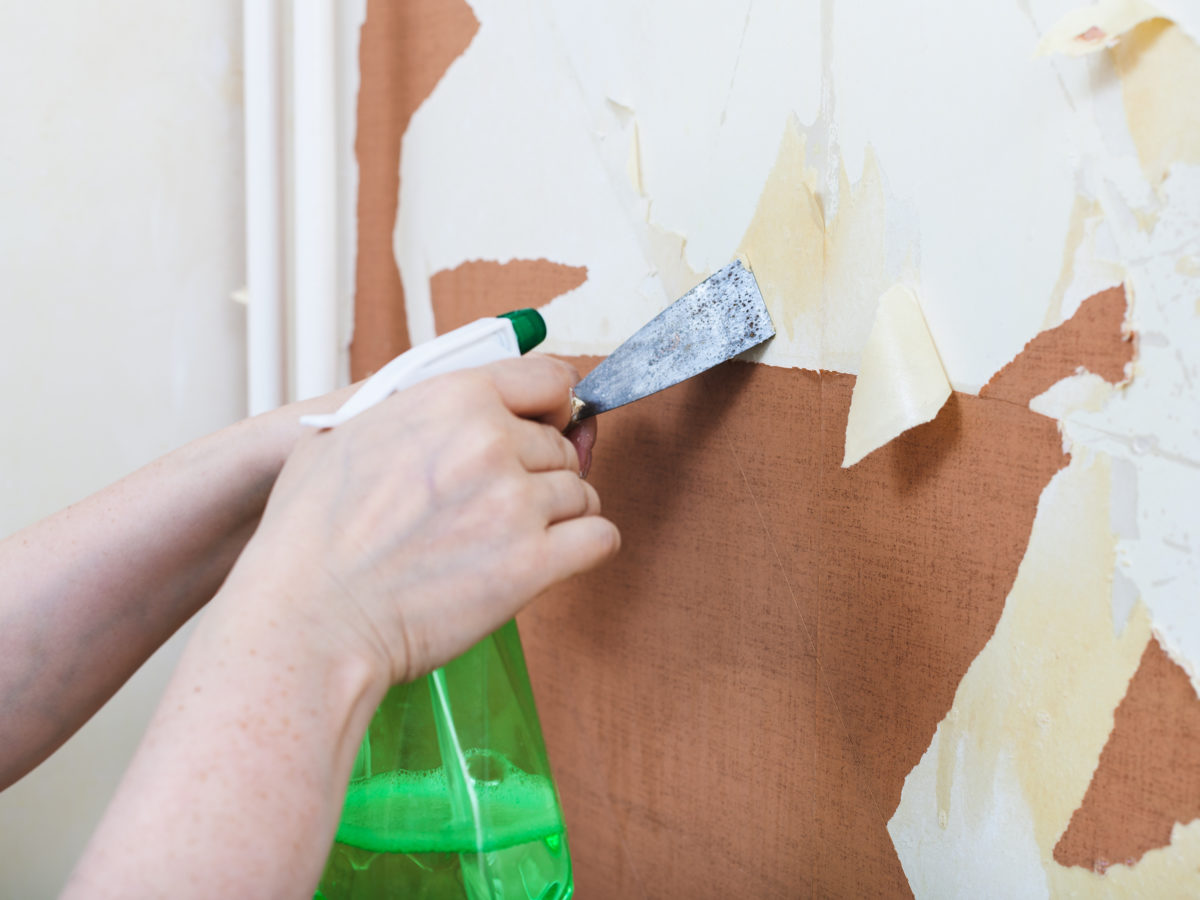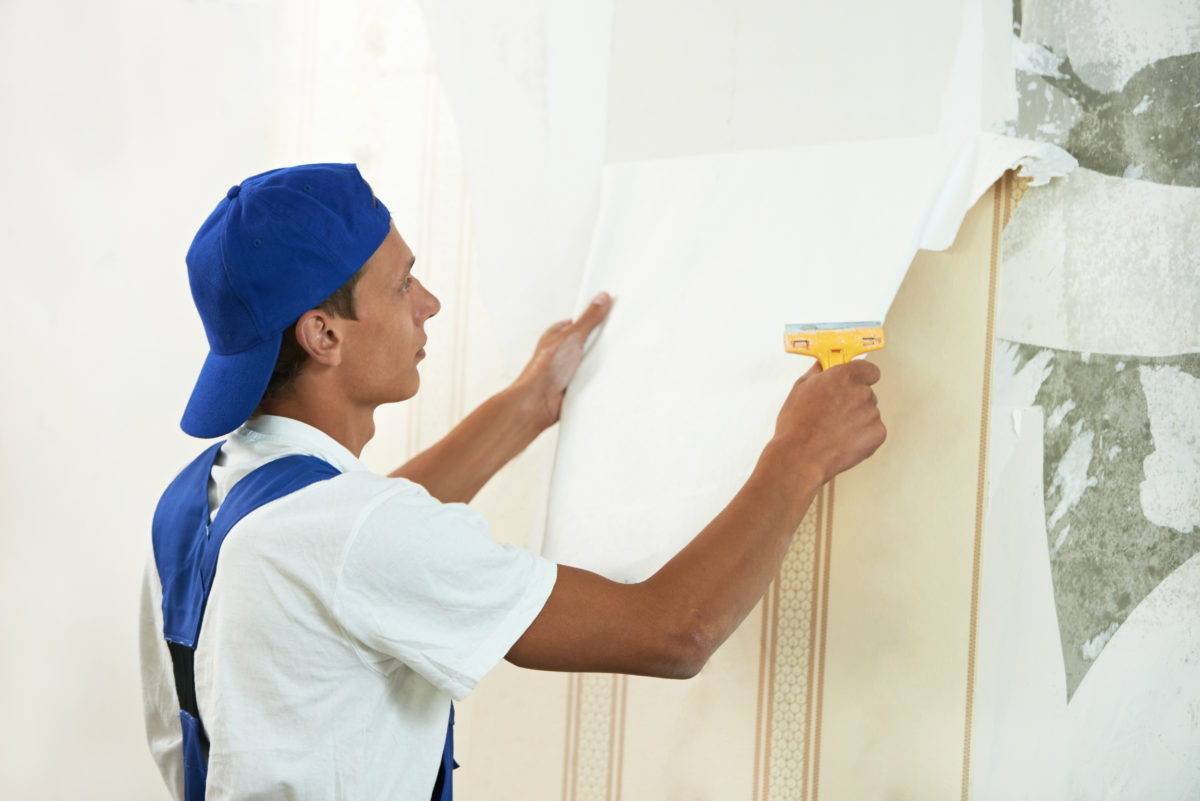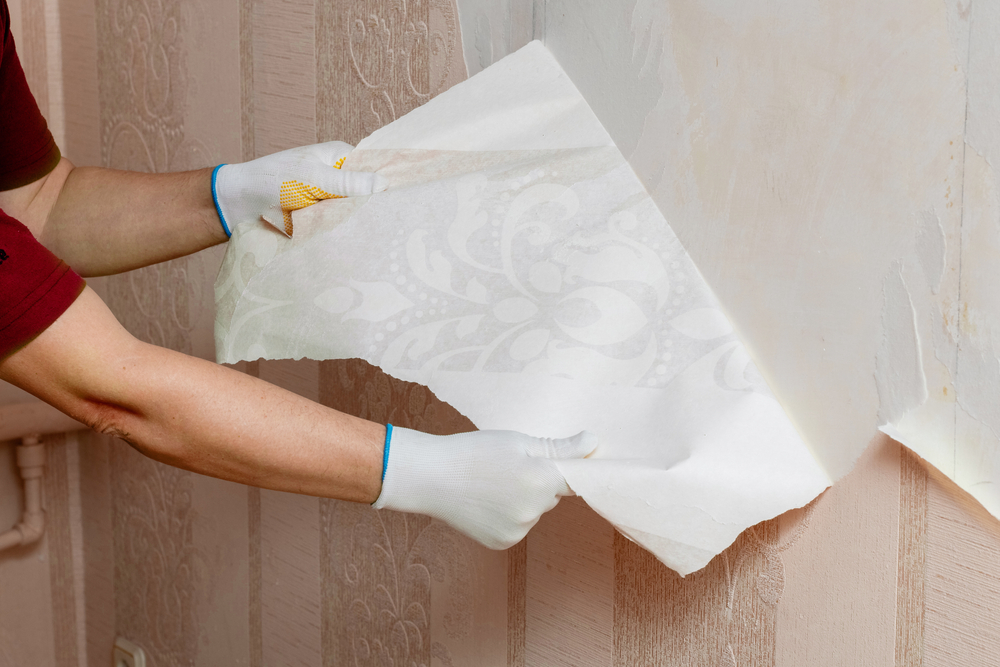The time has come to finally do something about the old wallpaper in your home. Whether you’ve changed your mind or you never really liked it, one thing is for sure, it has got to go. Read through this guide to figure out what kind of wallpaper you have and find the best method of how to remove old wallpaper in your home.
Know Your Wallpaper
Before you can begin, there are a couple things you need to know first. Not all wallpaper is made the same and therefore will require different removal methods depending on what kind it is.
Start by testing a small corner. The best place for this is near the ceiling or under a light socket where the paper tends to be loose and peel easily. Use a knife or scraper to help you pull up a corner and then use both hands to gently peel the wallpaper away from the wall.
If the wallpaper easily comes away from the wall in one piece, you know you have strippable wallpaper. This is great news because strippable wallpaper is the easiest to remove, but more on that later.
If the top layer comes off but the bottom layer stays on the wall, you have peelable top layer paper. This kind of wallpaper has two layers, one for the decorative paper and another underneath that feels rough and best resembles the sticky mess left behind when peeling a label off.
If this is the case in your home, it means it’s going to take a little more time, effort and water than you thought to get rid of the wallpaper.
If neither of these describes the wallpaper in your home, you probably have traditional old wallpaper which is the most difficult to remove. Instead of coming off in one satisfying strip, this wallpaper will tear easily and leave behind bits of ripped wallpaper all over your walls. While removal won’t be easy, it can be done.
Identify Your Wall Type
Before you can begin the process of removal, you need to know what kind of wall your wallpaper is on. The age of the wall usually determines whether it’s drywall or plaster.
Plaster
Commonly found in homes that are more than 50 years old, these walls are more solid than drywall and make a dull sound when you knock on them. This is because plaster walls are made by nailing wood lath to wood-framed walls and covering them in two or three coats of plaster.
Drywall
More recent than plaster, drywall has been commonly used in homes for the past 50 years. Drywall is more delicate than plaster and can be damaged easily. If you’re doing a knock test, be careful not to knock too hard. Drywall is a sheet of chalk-like substance covered with lightweight cardboard. These sheets are then nailed over wood-framed walls. It’s important to know that drywall cannot be overly soaked so you’ll have to take this into consideration if you need to use any liquid or a steamer to remove your wallpaper.
Prep the Area
Before you can start pulling and peeling, you need to properly prepare the area as wallpaper removal can be messy work. Begin by removing everything from the walls; this includes all pictures, shelves, and light switch plates. Be sure to cover exposed outlets with tape to prevent water and moisture from getting on them.
Put a drop cloth or old sheet down to protect your floors. It’s a good idea to cover wainscoting as well so the wood isn’t damaged in the removal process.
How To Remove Strippable Wallpaper
 This is the easiest kind of wallpaper to remove so it should be no surprise the steps are quick and easy.
This is the easiest kind of wallpaper to remove so it should be no surprise the steps are quick and easy.
Step 1: Use a small knife or scraping tool to peel up an edge of the wallpaper.
Step 2: Using both hands, pull the wallpaper until it begins to come off the wall. Each strip should come off in one easy piece.
Step 3: Repeat the above steps until all the wallpaper is gone. If you get stuck, use that same knife or scraper tool to help it along.
Step 4: Celebrate a job well done.
How to Remove Peelable Top Layer and Old Wallpaper

Step 1: Use a sponge to soak the top layer of paper. Experts recommend creating a solution of hot water and laundry detergent or hot water and vinegar.
Step 2: Cover the wall with the solution. For drywall, allow it to sit for a maximum of 15 minutes. For plaster walls, you can let the mixture sit for 10-30 minutes depending on the type of wallpaper. Make sure you really soak the entire strip of wallpaper and not just lightly dampen it. If the wallpaper is dry it will remain stuck to your wall and leave behind annoying bits you’ll have to scrape off later.
Step 3: Once thoroughly soaked, begin pulling the wallpaper up. You can also use a flexible, round-edged stripper at a low angle to help pull the wallpaper.
Optional Step: For particularly tricky situations, such as walls that have a layer of paint on top or underneath the wallpaper, you may have to use a steamer. We’re warning you now, using a steamer for wallpaper removal can be a slow and sweaty process. Proceed with caution and consider your options if you have particularly stubborn wallpaper that does not want to budge.
When In Doubt, Hire A Pro

Wallpaper removal can be a lengthy and complicated process. If just reading this article has tired you out, we suggest calling in a professional. With HomeStars you can easily connect with wallpaper removal specialists in your area and easily get quotes. Whether you go with a professional or attempt to do it yourself, good luck with pulling it off!
Article updated on June 5, 2019.
